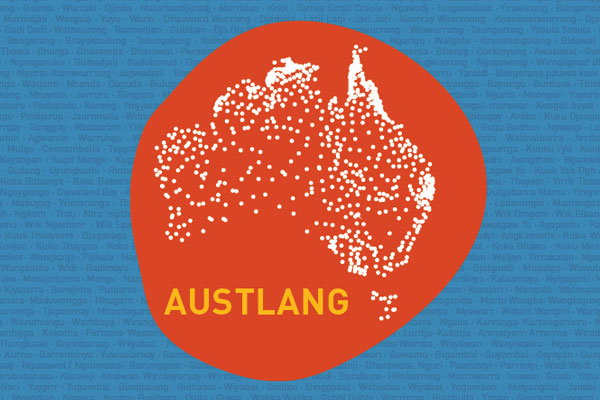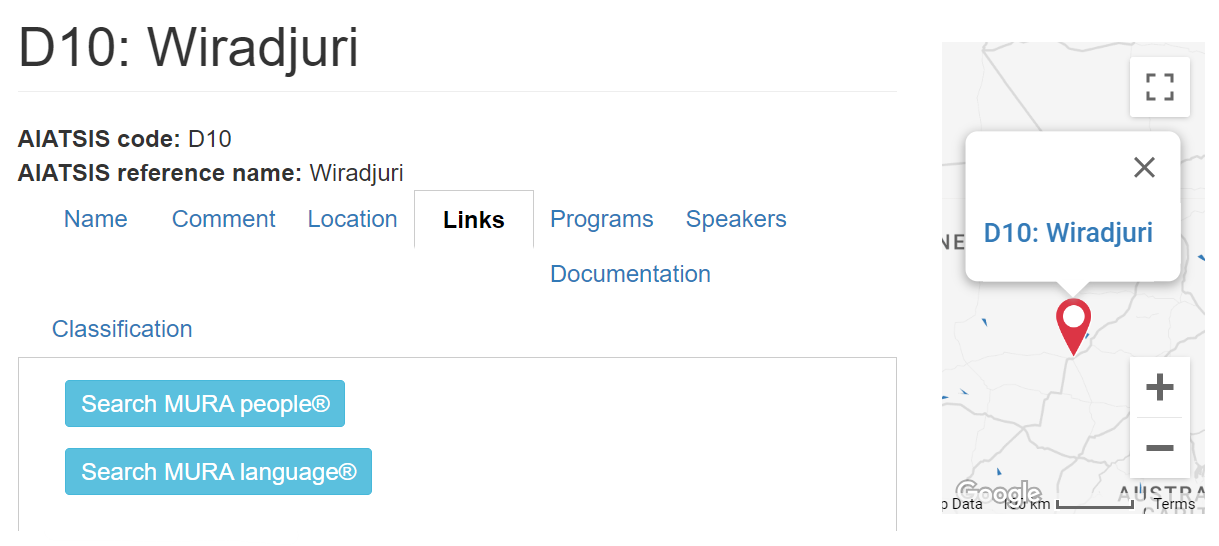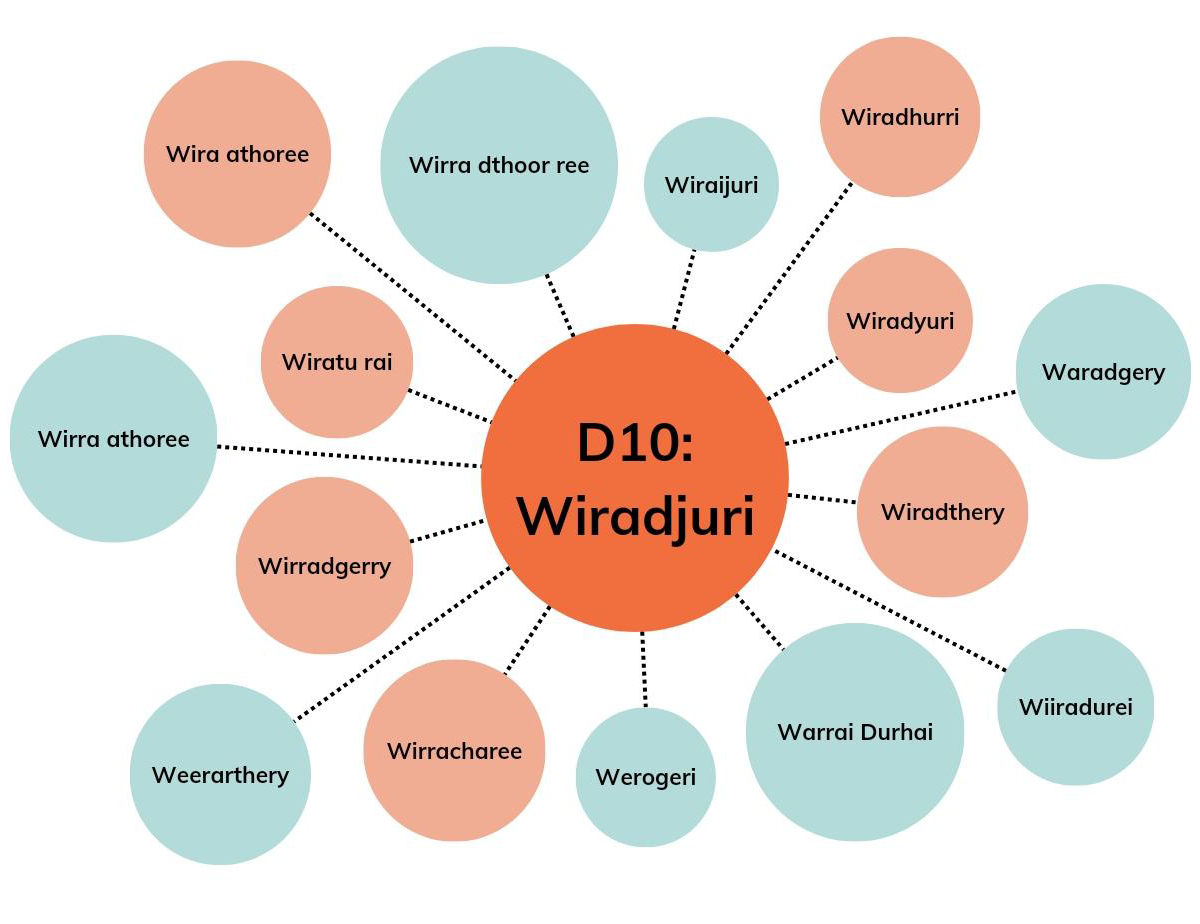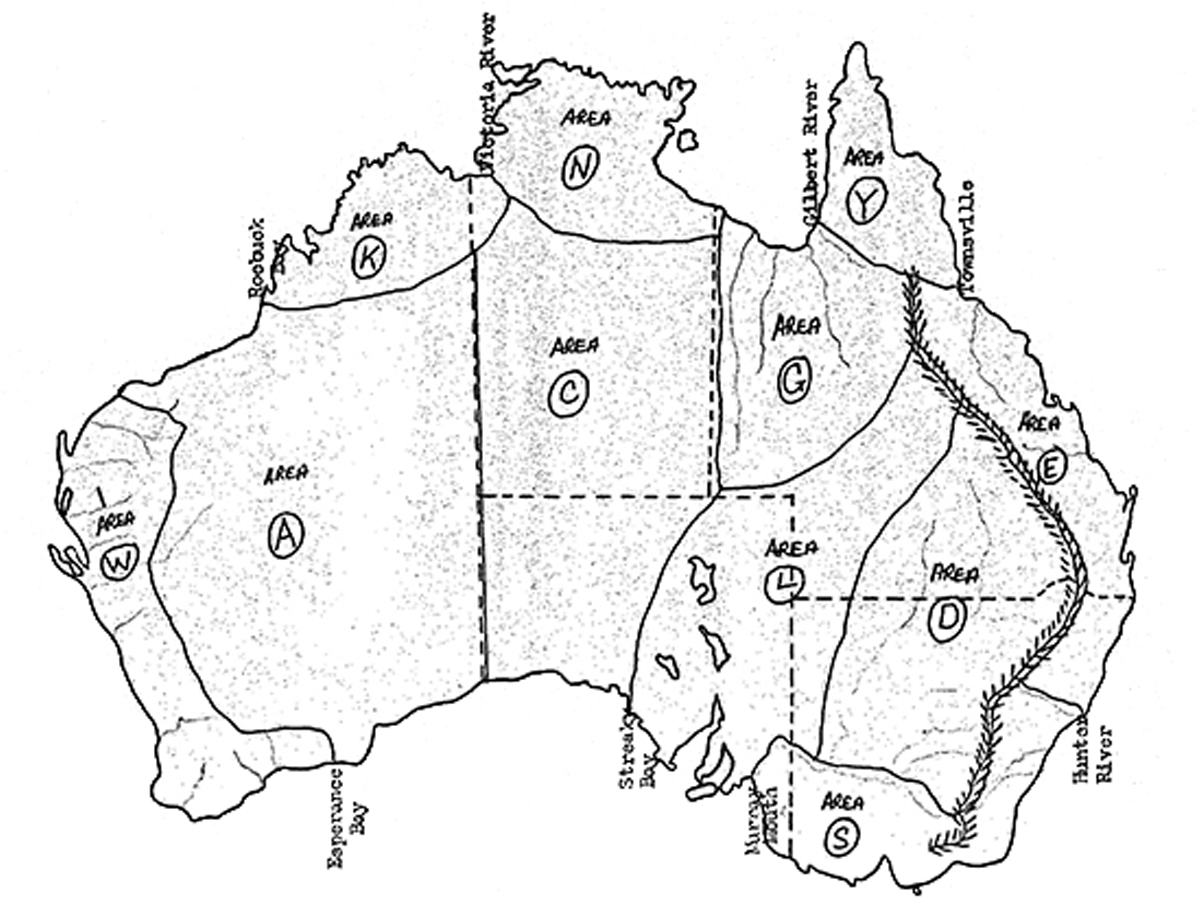Austlang is a comprehensive online resource providing information about the rich linguistic diversity of Australia's Indigenous languages. It serves as a single point of access to a vast collection of data and resources, encompassing both published and unpublished materials across various formats, including grammatical descriptions, dictionaries, audio recordings, and language learning materials.
The Austlang dataset provides detailed information about the diverse Indigenous Australian languages and their many dialects. It includes language names, alternative spellings and variants, geographical locations, and associated references.
Austlang also acts as a gateway to Mura
– the AIATSIS Catalogue.
To view items at AIATSIS that are related to a specific language/group, you can:
- Search on the main AustLang map page for the language name and click
“View record” once you locate the correct language, then - Click the Links tab, then
- Click “Search MURA people” or “Search MURA language”.
E.g.
Austlang Codes
Austlang codes are unique identifiers assigned to each Indigenous Australian language variety. These codes serve as stable and consistent identifiers, allowing users to easily identify and reference specific languages within the AustLang database and other research contexts.
The Austlang coding system is designed to accommodate changes in language names and spellings, ensuring that the codes remain relevant even as language communities evolve their linguistic practices. AustLang makes it easier for community to find their language materials, as they no longer need to search every spelling of the language name to find related materials. We do our best to connect all known spellings of languages to the language code, and to have the community’s preferred spelling or spellings alongside the code.
If the community’s spelling preferences change, the language name can be updated, but the code will stay the same. Collection materials in AIATSIS and in collecting institutions which use Austlang worldwide will remain tagged with the language code, which means communities can still easily find their materials despite changes in spelling.
The development of Austlang codes can be traced back to the work of linguist Arthur Capell. In his 1963 work, "Linguistic Survey of Australia," Capell introduced a coding system to identify and organise the vast array of Indigenous languages across the continent.
This system assigns a unique two-part code to each language. The first part consists of a letter representing the language's geographical region (pictured below), while the second part is a number indicating its relative position within that region. This simple yet effective system provides a consistent framework for identifying and referencing Indigenous languages.
If you are browsing Austlang, and notice that a known spelling of a language is not recorded, or any other information is unclear or incorrect, please submit feedback using the feedback form within Austlang, or email us at austlang@aiatsis.gov.au
Please include as much information within your feedback as possible, so we can make any necessary additions or changes. We aim to ensure AustLang reflects community preferences.



